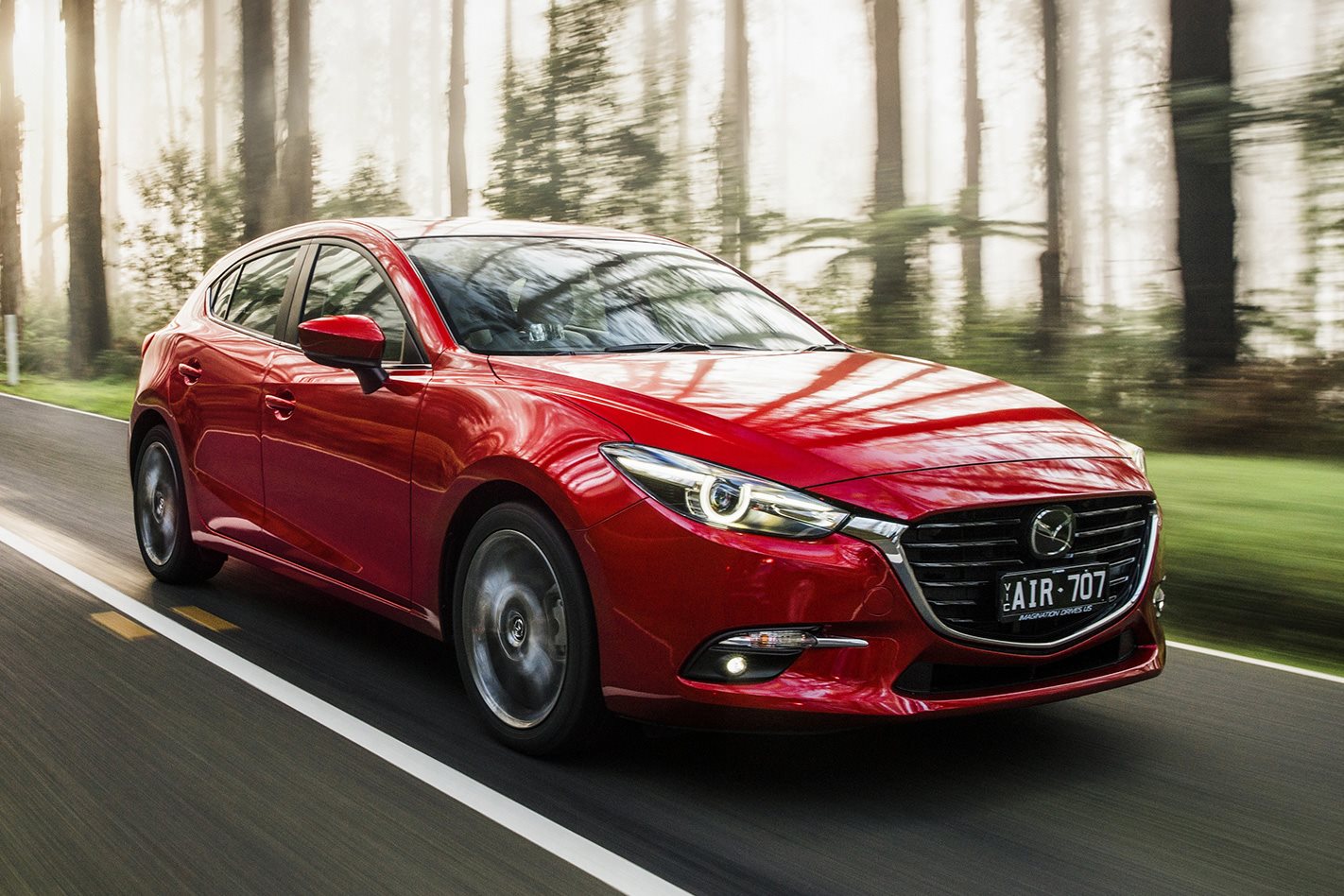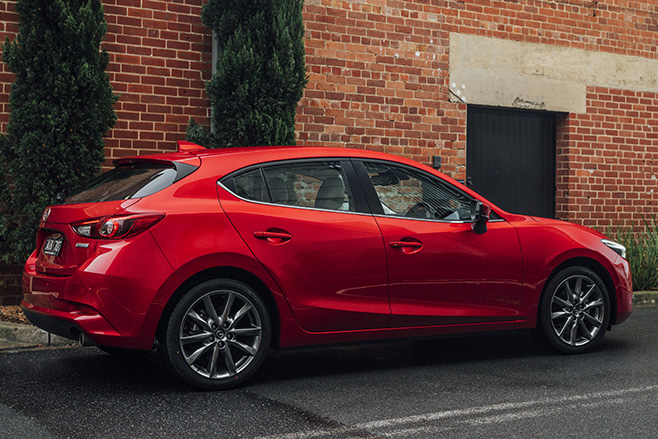
MAZDA has updated its bestselling 3 small car for model year 2017, offering newly-standardised driver-assist safety; a lightly remodelled nose; updated interior; improved driveability; reduced noise; and – in the top SP25 Astina version – a $1500 price cut.
On sale from August 1, it follows Volkswagen Group Australia’s lead with the revamped Skoda Octavia range back in June by including Autonomous Emergency Braking – known as Smart City Brake Support in Mazda-speak – in every model. Previously this was part of a $1500 safety pack, which has now been deleted.
The base Neo will remain at $20,490 plus on-road costs despite the spec boost, which also includes a fresh handling and stability enhancing technology known as G-force Vectoring Control.
However, to accommodate the extra features, the popular Maxx (from $22,890), Touring ($25,290), and SP25 ($25,690) variants’ prices have all risen by $500 apiece and the SP25 GT now costs $200 more at $29,990. The slow-selling XD turbo-diesel has been discontinued, while a CD player will no longer be offered.

Additionally, from Maxx upwards, AEB-reverse (for when driving backwards obviously), blind-spot monitoring, and Rear Cross Traffic Alert are now part of the deal, the SP25 GT scores Driver Attention Alert (when drowsiness is detected) and Mazda-first Traffic Sign Recognition, while the SP25 Astina range-topper from $33,490 ushers in Lane-Keep Assist and Adaptive LEDs.
Rounding out the changes, revised steering, shock absorber, anti-roll bar, and rear suspension components lift handling and ride qualities, while significantly more sound deadening aim to eliminate known noise paths.
The blink-and-you’ll-miss-it visual makeover sees revised headlights, a reshaped grille, more horizontal-looking bumpers, and a repositioned front numberplate holder. All are meant to provide a more upmarket appearance – important considerations when one of your main competitors is Germany’s Volkswagen Golf.
Inside, the changes are more obvious – with larger door pockets; the inclusion of an electronic parking brake instead of a good old levered handbrake (from the Touring upwards); cleaner and better matching instrumentation markings with more comprehensive information in the improved head-up display unit; a redesigned and more user-friendly steering wheel nicked from the CX-9 seven-seater SUV; and repositioned USB charger ports from the centre console to – you’ve guessed it – where the CD player used to be.
Note: due to the smaller multimedia head unit it receives rather than the MZD touchscreen, there is still no integrated rear camera for Neo. However, for $650, a dealer-fit rear-vision mirror-mounted item can be fitted.
On the driveability front, the G-force Vectoring Control system uses the engine to enhance chassis performance by adjusting torque delivery in response to steering inputs, for more stable and relaxed driving.

Engine response, meanwhile, improves in the continuing six-speed torque-converter auto models (that account for 80 percent of volume) with a new Sport mode that adapts the change-up points according to the operator’s style and inputs.
A revised electric steering tune promises more linear and natural responses; new ‘dynamic’ dampers with different oil and stronger structures are fitted, along with softer anti-roll bar mount bushings to reduce ride harshness, backed up by a new rear suspension crossmember and an additional trailing link that increases the lateral grip of the tyres.
Finally, the Astina GT’s adaptive cruise control now works up to 160km/h – the upshot of a request from Europe for broader functionality.
Mazda expects to shift around 3200 3s per month, with the Maxx taking the lion’s share with 40 percent over next 12 month, followed by the Neo (20 percent) and Touring (10 percent); 70 percent will be powered by the unchanged 114kW/200Nm 2.0-litre engine, the other 30 percent will be the 138kW/250Nm 2.5-litre unit in the sportier SP25, while the auto should snare about four out of five buyers. Both powertrains are tuned to run on standard 91 RON unleaded.
On sale since February 2014, the third-generation BM-series hatch and sedan have actually proven to be the most popular, averaging 19.2 percent compared to 18.8 percent for the 2008 BL and 17.7 percent for the original BK from 2004.
More importantly, this series 3 has the richest (and therefore more profitable) model mix ever, with the entry variant accounting for less than 20 percent of total sales – a rarity for such a mainstream model in this segment. Mazda says it reflects the predominantly private (rather than fleet) buyer demographic.
Lastly, three new colours have been added.
2016 Mazda 3 Series II prices
Neo $20,490
Neo auto $22,490
Maxx $22,890
Maxx auto $24,890
Touring $25,290
Touring auto $27,290
SP25 $25,690
SP25 auto $27,690
SP25 GT $29,990
SP25 GT auto $31,990
SP25 Astina $33,490
SP25 Astina auto $35,490



